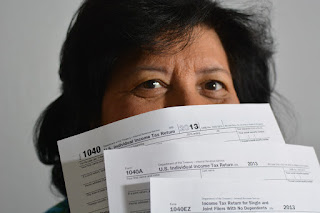
This week's Kickfurther Merchant of the Week is Ever Bamboo, Inc.. In case you didn't know, Kickfurther is a company that crowdfunds inventory for businesses. Instead of loaning the companies money, Kickfurther purchases inventory from a business and then returns it to the business to sell on consignment. As the inventory sells, investors are paid. The founder and CEO of Ever Bamboo, K.B. Lee is visiting with us today. K.B., tell me a little about yourself and your company--what is your background, why did you decide to sell bamboo charcoal deodorizers, and how did you go about starting the company?
A: My passion has always been in entrepreneurship, probably because of a gene that I inherited from my grandfather who co-founded a towel factory in Hong Kong, and my father who owns a general insurance agency in Calgary, Alberta. After graduating from Civil Engineering in university, I helped my dad grow his insurance agency later forming my own agency branch. Over time, I found it hard to scale such service-based business and lost my passion for an industry that is very traditional, heavily regulated and geographically restricted. I started to look for a business that was more exciting and rewarding.
I saw bamboo charcoal deodorizers and dehumidifiers for the first time while travelling in Asia in 2006. On the same trip, I visited a trade show and met a bamboo charcoal manufacturer. The idea of Ever Bamboo was conceived then and there. I started testing the products at local festivals in the first year and started to get into some local retailers in the second year. Little did I know that building a global brand and introducing a new product to market is both challenging and fulfilling at the same time. The fact that we now have retailers across North America and Australia allows me to travel to new places. Each day is an adventure with new challenges and opportunities. I began testing the products at local festivals in my first year of business, finding my way into stores by the second. I learned that it is hard work building a global brand and introducing new products to the market, yet each day is an adventure with new challenges and opportunities. Now we have retailers across North America and Australia, with more countries “rethinking the stink” on the horizon.
My motto is “Keep going and making new mistakes each day.”
Q: Sounds like a great attitude. I've heard it said that if you show me someone who has never made a mistake, I'll show you someone has never done anything. The information on Kickfurther says that you became aware of Bamboo Charcoal when you visited Asia. Where are your products made today? Where is the bamboo grown?
A: All of the bamboo charcoal deodorizers and dehumidifiers are made in China. They are made from a specific type of bamboo called Moso Bamboo, which is heavily populated throughout China.
Q: I know a lot of people are concerned about things made in China being laced with chemicals like lead or arsenic. Are you sure these products are safe?
A: Bamboo Charocal is derived from the natural growing moso bamboo. It is one simple ingredient making it safe for humans and pets everywhere!
Q: I'm curious about your room deodorizers. How do they work? What do they look like?
A: The Room Deodorizer is one of our bestsellers. It’s a square pouch filled with 200 grams of unscented bamboo charcoal granules. You could set it in a room up to 100 sq.ft. Because bamboo charcoal is extremely porous (with millions of tiny holes) and has a negative ionic charge, it absorbs odors and excess moisture in the air, as they have a positive charge. To reuse the product, simply leave the pouch under direct sunlight for 3 hours on each side very 2-3 months. The UV rays open up the pores to let out the odors and moisture that were trapped inside. The product lasts up to one year, and once it loses it's odor-fighting ability, it is easily recycled; just mix it with soil for gardening.
Q: I'm curious about your room deodorizers. How do they work? What do they look like?
A: The Room Deodorizer is one of our bestsellers. It’s a square pouch filled with 200 grams of unscented bamboo charcoal granules. You could set it in a room up to 100 sq.ft. Because bamboo charcoal is extremely porous (with millions of tiny holes) and has a negative ionic charge, it absorbs odors and excess moisture in the air, as they have a positive charge. To reuse the product, simply leave the pouch under direct sunlight for 3 hours on each side very 2-3 months. The UV rays open up the pores to let out the odors and moisture that were trapped inside. The product lasts up to one year, and once it loses it's odor-fighting ability, it is easily recycled; just mix it with soil for gardening.
Q: Is that good for plants?
A: The charcoal granules deter pests and regulate moisture in the soil, and are ideal for gardening, delicate plants like orchids, indoor terrariums or clever home accessories.
Q: So I can take the pouch and put it inside a decorative bowl or something, or do I have to, I guess for lack of a better word, display it?
Q: So I can take the pouch and put it inside a decorative bowl or something, or do I have to, I guess for lack of a better word, display it?
A: Set is out anywhere, and get creative!
Q: Which product is your best seller?
A: Our bestsellers are the Room, Closet, and Shoe Deodorizer + Dehumidifier.
Q: Who invented the Bamboozler? Does he/she have a story?
 A: The story behind The Bamboozler is that while brainstorming our new approach to a brand voice, our creative copy writer & strategist Natalie Bonelli brought the idea of a cartoon/mascot to the table for packaging and marketing purposes. She felt that there needed to be something ‘fun and original‘ to set us apart in the market, and that putting a “face” if you will, to the brand would resonate with consumers not only in a fun visual way, but by driving home the 3 R’s (Rethink - Reuse- Recycle) of ease and sustainability of Ever Bamboo’s message. I took this concept to our brilliant illustrator and creative designer Felix Wong and the moment I saw his rendering, I knew he nailed it. This team effort brought our little guy to life, but now he needed a name. The team came to the table with a lot of really fun ones, so we decided to have a crowd-naming campaign on social media - entitled “BamWHO?" - and ultimately Natalie’s name, The Bamboozler, came out on top. We think of him as our SuperHero of Stink as he bamboozles must and odors anywhere, anytime. Watch for more of him in the future.
A: The story behind The Bamboozler is that while brainstorming our new approach to a brand voice, our creative copy writer & strategist Natalie Bonelli brought the idea of a cartoon/mascot to the table for packaging and marketing purposes. She felt that there needed to be something ‘fun and original‘ to set us apart in the market, and that putting a “face” if you will, to the brand would resonate with consumers not only in a fun visual way, but by driving home the 3 R’s (Rethink - Reuse- Recycle) of ease and sustainability of Ever Bamboo’s message. I took this concept to our brilliant illustrator and creative designer Felix Wong and the moment I saw his rendering, I knew he nailed it. This team effort brought our little guy to life, but now he needed a name. The team came to the table with a lot of really fun ones, so we decided to have a crowd-naming campaign on social media - entitled “BamWHO?" - and ultimately Natalie’s name, The Bamboozler, came out on top. We think of him as our SuperHero of Stink as he bamboozles must and odors anywhere, anytime. Watch for more of him in the future. A: Kickfurther approached us. I like the concept of crowdfunding ever since Kickstarter got popular. Kickfurther is a natural match because it’s a win-win for both backers and us.
Q: What do you see as the advantages Kickfurther has over conventional financing?
A: Conventional financing has lots of restrictions and not easily accessed by new and small companies. For short-term inventory financing, Kickfurther fills a niche that I haven’t seen being done before.
Q: Have you tried Kickfurther from the investor side? Would you recommend it to your family and friends?
A: Yes, I became a backer two weeks ago just to see what it’s like and experience the process as a backer. I have recommended Kickfurther to other businesses (to pitch) and friends (to back) already during this short time frame.
Q: Well, K.B. I hope you are successful not only with Ever Bamboo, but also as a Kickfurther Investor. Readers, if you want to help companies like Ever Bamboo and (hopefully) make a few dollars, invest via Kickfurther. If you use this link, you get $5.00 toward your first investment. If you have a business and want to explore using Kickfurther to finance your inventory, use this link and I get a commission. K.B., is there anything else you'd like to tell us?
 A: I'd like to offer your readers a chance to try our products. I'm making two offers: First, all of your readers get a 15% discount in our online store. Just enter the code give_stink_the_boot on check out (Expires 3/15/2016). Secondly, we are giving away three pairs of shoe deodorizers to two readers.
A: I'd like to offer your readers a chance to try our products. I'm making two offers: First, all of your readers get a 15% discount in our online store. Just enter the code give_stink_the_boot on check out (Expires 3/15/2016). Secondly, we are giving away three pairs of shoe deodorizers to two readers.
Q: Ok readers, the Rafflecopter gadget is below. Thank you so much for the giveaway and for joining us here today, K.B.
a Rafflecopter giveaway


















